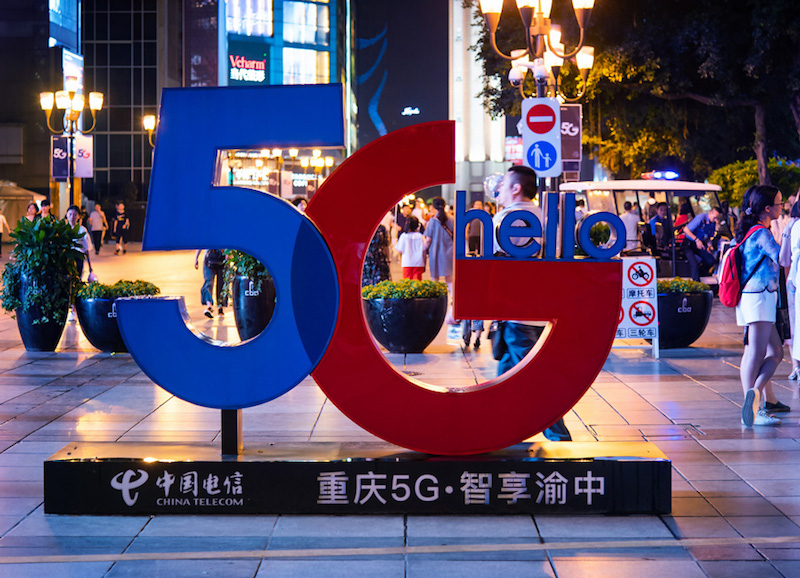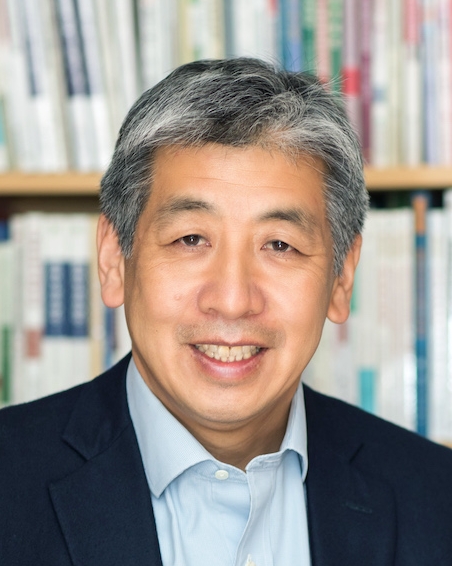Expert Interview
A New Era of Chinese Technology and Innovation
By Rachel Lietzow, Qiao Ye, Sonia Tan, Masters candidates, UC San Diego School of Global Policy and Strategy
Background:
Even though the United States will see a change of leadership in January of next year, the intensifying technological competition between the U.S. and China likely will not be reversed. As Chinese leadership is currently in the process of drafting its 14th five-year plan (FYP) for the country’s 2021-2025 political and economic course, party leaders have signaled that science and technology will be an integral part of it. On September 11th of this year, President Xi hosted a symposium for scientists in Beijing, where he delivered an important speech on China’s science and technology development. Much of the speech was directed towards the future, where Xi discussed the need to strengthen the national innovation system (NIS), fortify a system of national laboratories, and encourage original basic research. President Xi invoked Maoist era ideology, reminding scientists to adopt the “Two Bombs, One Satellite” spirit, proactively shoulder the nation’s historical responsibility, and integrate individual scientific pursuit with the broader, selfless cause of building a modernized socialist country. Will China be able to reach these goals? The U.S., as a bottom-up techno-security state, must use other strategies to motivate domestic innovation. Will China take the lead in this bilateral competition? Dr. Cheung is skeptical.
As we see increasing references to “national security” in U.S. political lingo—including the attempts to ban Chinese apps such as Tiktok and Wechat, and U.S. pressure on EU allies like the U.K. to ban Huawei 5G—can you help us understand what is behind these U.S. policies?

Dr. Cheung: What you have described has been taking place even before the Trump administration. In fact, you can trace such policies back to Obama’s second term when the U.S. began to pay increasing attention to China as a strategic competitor, or a potential threat. Many of such policy moves were in the security domain, but there were also some in what we call the broader geo-economic domain, particular technology and innovation. Some of the policy changes were in reference to Chinese investments coming into sensitive parts of the U.S. economy. These “business” issues became linked to the role of the communist party, information disclosure, and influence. So what we see today and in the last few months with TikTok or 5G, is this sense of the U.S. identifying China as a comprehensive technological, informational, influence threat. China’s threat has become increasingly crystallized in the minds of Trump administration officials.
There are various parts to this policy shift: first, the intention is to curb the Chinese footprint in critical parts of the U.S. economy and society. Second, the U.S. is looking to slow China’s acceleration to become a science and technology power. When the U.S. talks about China, it specifically means the Chinese Communist Party. The Trump administration has tried to differentiate the party from the state, but in the overall analysis, it is still China as a whole that we have to deal with. You see this effort to decouple, or further, to contain and push back against China’s rise in the areas of technology and information. The U.S. also realizes that it cannot accomplish this alone. It must be a comprehensive international effort, which is why the U.S. is relying heavily on its allies like the U.K., and other Five Eyes countries. I see this as the next phase going forward.
Now a key question is: What is the U.S. doing to significantly improve its own ability to innovate and develop technology? Given that the U.S. is very much a bottom-up decentralized state, it cannot do what the Chinese state is doing. The Chinese model of technological development is very much a state-led approach, for instance, Made in China 2025 or the Five-Year Plans. The Chinese state’s ability to mobilize allows it to concentrate and push forward. Therefore, it is more difficult for the U.S. to leverage its model in a great power competition, especially at the onset of mobilizing for innovation.
If Chinese telecoms giants’ 5G services and networks are excluded from western markets, would this prove a bigger disadvantage to China or to western countries?
Dr. Cheung: That is a good question, but there is no black and white answer. Right now in terms of 5G, the U.S. has had mixed success in trying to block Chinese companies such as Huawei and ZTE. They had success in Australia and New Zealand, and the U.K. has come back on the U.S. side. However, there are a few countries who have hedged their bets. Germany, in particular, stands out. Germans want to take a balanced approach when dealing with the U.S. or China. The U.S. has found it challenging to get all of its allies on board. This stems from the fact that 5G is both a national security and economic issue. As we have seen, the U.S. is emphasizing the national security aspect. A number of other countries like Japan and Australia have emphasized national security as well because of their geographical proximity to China.
 Let’s look at Europe. Europe is much more divided when it comes to Chinese 5G. This is because Europe invested heavily and opened up to 4G, allowing Chinese companies, especially Huawei, to invest in the legacy 5G systems. The Chinese presence in these countries has been quite significant. Preventing China from doing 5G means that European countries will have to rip up a lot of embedded investment, which is very costly. Chinese 5G, from an economic point of view, is very appealing because it is an early starter, advanced, and low-cost. Non-Chinese competition in this area is very limited.
Let’s look at Europe. Europe is much more divided when it comes to Chinese 5G. This is because Europe invested heavily and opened up to 4G, allowing Chinese companies, especially Huawei, to invest in the legacy 5G systems. The Chinese presence in these countries has been quite significant. Preventing China from doing 5G means that European countries will have to rip up a lot of embedded investment, which is very costly. Chinese 5G, from an economic point of view, is very appealing because it is an early starter, advanced, and low-cost. Non-Chinese competition in this area is very limited.
The ultimate question is: do the U.S. and its allies view 5G as a near-term or long-term issue? If it is the former, allowing Huawei and China to enter the market makes more sense because of the legacy investment, and because the Chinese are much more advanced and cost-effective in 5G infrastructure. However, if they look at 5G with a long-term and comprehensive view, considering that 5G is critical to next-generation information and technology development, then this will show a very different picture. While Chinese companies are good at developing 5G hardware, they are not that advanced when you consider the entire 5G ecosystem. A lot of the more fundamental innovations, such as 5G connectivity, are more advanced in the U.S. and other countries. If the 5G technology race is a marathon rather than a 100-meter sprint, the U.S. and the western countries would have greater competitive advantage.
Further on that point, 5G is one of the clearest areas where significant decoupling can take place. This would entail two groups: a western 5G and a Chinese 5G. We see that a number of developing countries and Russia have decided that they can only afford what the Chinese can offer. Meanwhile the western 5G will most likely include the more industrialized countries of the world. Then there is the messy middle. We will find many countries in the middle, where they have partly Chinese 5G, partly U.S. 5G due to the geo-economic and geopolitical issues at play. At the end of the day, you get technologically divided ecosystems in the global economy, which will raise the cost and lower efficiency. But in a “cold war” environment this is the messy architecture that we are going to have.
As the U.S. increasingly suspends the export of sensitive technologies and defense equipment to China, do you think this move will further impede China’s innovation, or actually spur tech innovation and military development?
China has historically had this issue on how dependent they can be on international sources of technology for their development, especially on the national security side. This goes back to the 1950s and 1960s when the Chinese were very dependent upon the Soviet Union for a large portion of their technology imports. When the Chinese wanted the critical and strategic technology that the Soviets had, they were cut off and had to develop their own indigenous capabilities in what has become known as the liang dan yi xing “two bombs, one satellite” experience. This is not the first time the Chinese encountered international sanctions and technological containment. It is part of their history.
If you fast-forward to today’s speeches by Xi Jinping and military leaders, they refer regularly to the “two bombs and one satellite” spirit. How to react after being cut off from the international arena was a critical decision in the Maoist days, as it is now with areas such as semiconductors.
 China’s focus on indigenous innovation, a step up from a late catch-up technology power to an original innovation power, is front and center of China’s global technology ambition, both in terms of existing technology and in emerging areas such as 5G, quantum, AI, nuclear fusion, etc. Xi Jinping regularly states that China is going to step up, and that the efforts to shut China off from the global innovation network are only spurring China on. The shifting landscape is a good opportunity for China to wean itself off from what I call an “absorption-based model of technology development.” Some concrete areas to analyze for changes are China’s research and development flow, and the training of next-generation talent in science and technology. We see that China is doubling down in these areas.
China’s focus on indigenous innovation, a step up from a late catch-up technology power to an original innovation power, is front and center of China’s global technology ambition, both in terms of existing technology and in emerging areas such as 5G, quantum, AI, nuclear fusion, etc. Xi Jinping regularly states that China is going to step up, and that the efforts to shut China off from the global innovation network are only spurring China on. The shifting landscape is a good opportunity for China to wean itself off from what I call an “absorption-based model of technology development.” Some concrete areas to analyze for changes are China’s research and development flow, and the training of next-generation talent in science and technology. We see that China is doubling down in these areas.
The problem for China though is that such a technological leap takes time. When you try to develop new generations of technology like AI or Quantum, it does not happen overnight: it takes 10-15 years and it requires a whole ecosystem. You need human capital, financial capabilities, and enterprises. China under Xi Jinping has been building this ecosystem, what I call a national innovation system, but it will take a long time. The Chinese leadership has set the goals that, by 2035, they will move into the top tier of S&T countries in the world, and by 2050, they will begin to challenge the U.S. for the “most advanced country” title. It looks like they are trying to reach that goal and are putting in the resources and political capital to make it happen.
How successful do you perceive the “Made in China 2025” strategy to be, and has COVID-19 compromised Chinese capabilities in reaching the ambitious science & tech goals?
Dr. Cheung: Made in China 2025 is a buzzword, but it is just one plan that pertains mostly to manufacturing. I like to tell people to look at it more broadly. There is a much more important strategy that Xi Jinping passed back in 2016, which was the innovation-driven development strategy (IDDS). It replaced the Open Door and Reform policy established by Deng Xiaoping. Deng’s strategy was very successful, focusing on exports and encouraging foreign companies to enter the Chinese market. This helped to redefine China as a manufacturing powerhouse. However, as China’s GDP growth has slowed, Chinese leaders have noted the dangers of a potential middle-income trap. The next step is for China to become a high-tech economy with a strong innovation focus, resembling the stage that characterizes many industrialized powers.
Xi Jinping’s focus is now on the innovation part of the economy. This area provides a much more efficient use of resources, which can help China compete in the global marketplace. Made in China 2025 is part of that, but the strategy is broader. There are numerous other plans that are associated with future innovation, such as the Standards 2035. The Chinese have a new science and technology 2030 innovation plan as well, so a whole range of innovation-driven development strategies are being rolled out under the innovation umbrella.
A key mistake for China was the marketing and names of some of these plans. For example, not only did “Made in China” attract bad press, but “China 2025” also began to attract negative attention especially from the U.S. due to its lack of clarity. Made in China 2025 is really about industrial policy and how China is using subsidies to help industrial companies focus on critical areas. This allowed China to gain advantage at the expense of the U.S. and international players. Two years ago, due to all this international criticism, the Chinese no longer talk about Made in China 2025: they use other terms.
China is starting to lay the foundations for the ecosystem that these plans will need moving forward. Currently, they are pouring money and resources into cultivating a lot of these technological programs and projects. Due to COVID-19, we will see a much more focused interest on development in the biotech sector in the 14th Five-Year Plan. There is no doubt that we are entering a new phase in Chinese technology development. The Chinese are going to have to make some adjustments as they push the bar higher. However, the general direction is very clear since Xi Jinping has taken power, and COVID-19 has not caused much strategic deviation.

